-
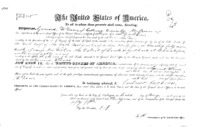 Land Grant of Gerrard Davis (May 1831)
Land Grant of Gerrard Davis (May 1831) Gerrard Davis was patented new land in Missouri. In 1826 and then again in 1831 he received 80 acres, both in the northwest quarter of township forty seven, range ten west in section thirty four of Callaway County, Missouri. Today, this land is located a half mile west of I-54 and approximately four miles southwest of Fulton, Missouri.
-
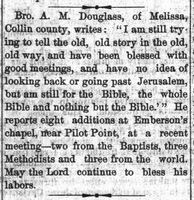 Emberson Chapel, Pilot Point (1886)
Emberson Chapel, Pilot Point (1886) Emberson Chapel of Pilot Point, Texas reports adding eight member to their congregation.
-
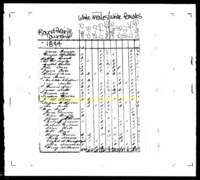 1844 State Census of Gerrard Davis
1844 State Census of Gerrard Davis State Census, which throughout Callaway County did not depict enslaved persons, shows Gerrard Davis and his family in 1844 in Round Prairie Township, MO.
-
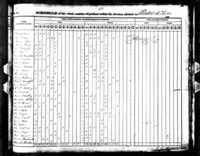 1840 Census of Gerrard Davis
1840 Census of Gerrard Davis 1840 Census Depicts the family of Gerrard Davis on line 1: Gerrard (40-50), Amelia (30-40), Francis (15-20), Elizabeth (10-15), Charles (10-15), Elias (5-10), Mary (5-10), Richard (0-5), Margaret (0-5).
-
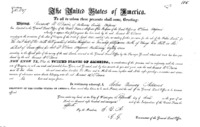 Land Grant of Gerrard Davis (June 1826)
Land Grant of Gerrard Davis (June 1826) Gerrard Davis was patented new land in Missouri. In 1826 and then again in 1831 he received 80 acres, both in the northwest quarter of township forty seven, range ten west in section thirty four of Callaway County, Missouri. Today, this land is located a half mile west of I-54 and approximately four miles southwest of Fulton, Missouri.
-
 Equalizing Educational Opportunities for Children In Denton County
Equalizing Educational Opportunities for Children In Denton County In this masters thesis, you will find tables of attendance, school systems, bus systems, and income inequality. Robert Lee Proffer wrote this thesis in 1937, reviewing the education system across all areas. From whites to blacks and urban to rural, all categories are covered within the Denton County system. Through his findings we can imagine what the education system was like for both whites and blacks across all of Denton County. Through tables, data analysis, and maps you can see the differences and similarities in both urban and rural areas. There was 6.6% of the Denton County population who were African American and 93.1% were native whites. However, 70.4% were classified as living in rural areas which is where the most disconnect in education occurs. The biggest differences were made in school districts that were urban and rural, since the rural areas did not have access to as many opportunities and advancements. This is another reason why we believe that African American communities gathered around their church and school for support. Seeing the differences in education can allow us to determine what it was like for students and teachers.
-
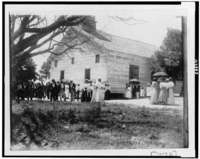 African American men, women, and children in front of southern churches.
African American men, women, and children in front of southern churches. Photographs depicting multiple southern African American churches and their parishioners.
-
 Members of Predominantly White Denominations as a Percentage of the White Population in 1890
Members of Predominantly White Denominations as a Percentage of the White Population in 1890 Members of Predominantly White Denominations as a Percentage of the White Population in 1890
-
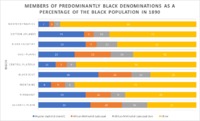 Members of Predominantly Black Denominations as a Percentage of the Black Population in 1890.
Members of Predominantly Black Denominations as a Percentage of the Black Population in 1890. Members of Predominantly Black Denominations as a Percentage of the Black Population in 1890.
-
 Willie Hudspeth's feelings on the state of the cemetery
Willie Hudspeth's feelings on the state of the cemetery Oral history clip of Willie Hudspeth talking about St John's Cemetery
-
 Willie Hudspeth on the unkept state of the cemetery
Willie Hudspeth on the unkept state of the cemetery Oral History clip of Willie Hudspeth talking about St. John's Cemetery
-
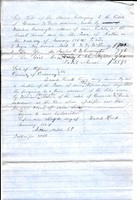 Gerrard Davis Estate: Bill of Sale of Slaves
Gerrard Davis Estate: Bill of Sale of Slaves Insert Transcription
-
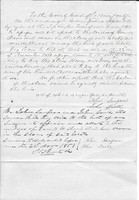 Gerrard Davis Probate: Widow's Dower of Slaves
Gerrard Davis Probate: Widow's Dower of Slaves Amelia Davis, widow of Gerrard Davis, is granted a widow's dower of the estate's slavery.
-
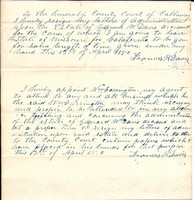 Transfer of Administration on Gerrard Davis Probate (1850)
Transfer of Administration on Gerrard Davis Probate (1850) Francis Davis withdraws as the administrator of the Gerrard Davis probate to go to California and his brother-in-law, William Carrington, is appointed in his absence.
-
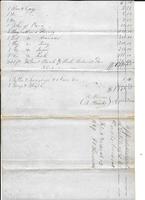 Appraisal of the Estate of Gerrard Davis (March 1849)
Appraisal of the Estate of Gerrard Davis (March 1849) Appraisal of the estate of Gerrard Davis which depicts and establishes the value of livestock and five enslaved persons: Henry, Amanda, Joseph, Jack, and Jerry.
-
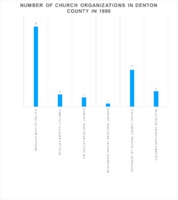 Number of Church Organizations in Denton County in 1890
Number of Church Organizations in Denton County in 1890 Chart depicting the number of church organizations in Denton County in 1890 according to compiled census data.
-
 Number of Members of Selected Church Denominations in Denton County
Number of Members of Selected Church Denominations in Denton County Chart depicting the number of members of selected church denominations in Denton County according to compiled census data.
-
 Charles Trimble Land Deed
Charles Trimble Land Deed Land Deed in 1896 depicting the purchase of land in the incorporated portion of Pilot Point by Charles Trimble.
-
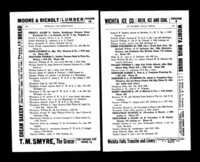 1909 City Directory of Wichita Falls
1909 City Directory of Wichita Falls City Directory of Wichita Falls, Texas in 1909 depicts C. Trimble as the principal of Washington school.
-
 Burial Of Sarah by Frances Ellen Watkins Harper
Burial Of Sarah by Frances Ellen Watkins Harper This is a poem written by the African American abolitionist and poet Frances Ellen Watkins Harper.
-
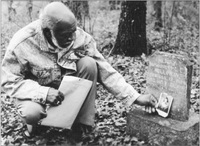 Eli Sledge
Eli Sledge "In this photograph Eli Sledge is shown placing a picture of his aunt Analiza Holloway on the headstone of her husband. Henry Holloway was born into slavery in 1854 and was buried in 1916. (Courtesy of the Pilot Point Post Signal)" From Jay Melugin, Images of America: Pilot Point (Charleston, SC: Arcadia Publishing, 2009), p. 77.
-
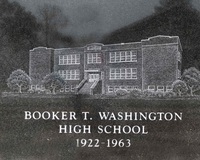 Booker T. Washington High School
Booker T. Washington High School Image of Booker T. Washington High School in Wichita Falls, TX where C. C. Trimble was the principal.
-
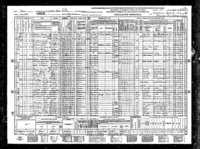 1940 Census of C. C. Trimble
1940 Census of C. C. Trimble Census of Wichita County, Texas in 1940 depicts the Trimble family.
-
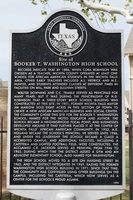 Booker T. Washington Historical Marker
Booker T. Washington Historical Marker Historical Marker at the site of Booker T. Washington School in Wichita Falls depicts C. C. Trimble as principal.
-
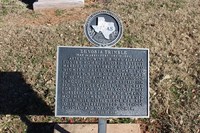 Zenobia Trimble Historial Marker
Zenobia Trimble Historial Marker After growing up in an Alabama foster home, Zenobia Estelle married C. C. Trimble and came to Wichita Falls. They had two children. While her husband was principal of Booker T. Washington School, she taught and helped him begin science classes. She worked for 38 years at the "Colored Day Nursery" for children of working mothers. Mrs. Trimble earned community respect for her aid to the underprivileged, to school children, and to young women.
 Land Grant of Gerrard Davis (May 1831) Gerrard Davis was patented new land in Missouri. In 1826 and then again in 1831 he received 80 acres, both in the northwest quarter of township forty seven, range ten west in section thirty four of Callaway County, Missouri. Today, this land is located a half mile west of I-54 and approximately four miles southwest of Fulton, Missouri.
Land Grant of Gerrard Davis (May 1831) Gerrard Davis was patented new land in Missouri. In 1826 and then again in 1831 he received 80 acres, both in the northwest quarter of township forty seven, range ten west in section thirty four of Callaway County, Missouri. Today, this land is located a half mile west of I-54 and approximately four miles southwest of Fulton, Missouri. Emberson Chapel, Pilot Point (1886) Emberson Chapel of Pilot Point, Texas reports adding eight member to their congregation.
Emberson Chapel, Pilot Point (1886) Emberson Chapel of Pilot Point, Texas reports adding eight member to their congregation. 1844 State Census of Gerrard Davis State Census, which throughout Callaway County did not depict enslaved persons, shows Gerrard Davis and his family in 1844 in Round Prairie Township, MO.
1844 State Census of Gerrard Davis State Census, which throughout Callaway County did not depict enslaved persons, shows Gerrard Davis and his family in 1844 in Round Prairie Township, MO. 1840 Census of Gerrard Davis 1840 Census Depicts the family of Gerrard Davis on line 1: Gerrard (40-50), Amelia (30-40), Francis (15-20), Elizabeth (10-15), Charles (10-15), Elias (5-10), Mary (5-10), Richard (0-5), Margaret (0-5).
1840 Census of Gerrard Davis 1840 Census Depicts the family of Gerrard Davis on line 1: Gerrard (40-50), Amelia (30-40), Francis (15-20), Elizabeth (10-15), Charles (10-15), Elias (5-10), Mary (5-10), Richard (0-5), Margaret (0-5). Land Grant of Gerrard Davis (June 1826) Gerrard Davis was patented new land in Missouri. In 1826 and then again in 1831 he received 80 acres, both in the northwest quarter of township forty seven, range ten west in section thirty four of Callaway County, Missouri. Today, this land is located a half mile west of I-54 and approximately four miles southwest of Fulton, Missouri.
Land Grant of Gerrard Davis (June 1826) Gerrard Davis was patented new land in Missouri. In 1826 and then again in 1831 he received 80 acres, both in the northwest quarter of township forty seven, range ten west in section thirty four of Callaway County, Missouri. Today, this land is located a half mile west of I-54 and approximately four miles southwest of Fulton, Missouri. Equalizing Educational Opportunities for Children In Denton County In this masters thesis, you will find tables of attendance, school systems, bus systems, and income inequality. Robert Lee Proffer wrote this thesis in 1937, reviewing the education system across all areas. From whites to blacks and urban to rural, all categories are covered within the Denton County system. Through his findings we can imagine what the education system was like for both whites and blacks across all of Denton County. Through tables, data analysis, and maps you can see the differences and similarities in both urban and rural areas. There was 6.6% of the Denton County population who were African American and 93.1% were native whites. However, 70.4% were classified as living in rural areas which is where the most disconnect in education occurs. The biggest differences were made in school districts that were urban and rural, since the rural areas did not have access to as many opportunities and advancements. This is another reason why we believe that African American communities gathered around their church and school for support. Seeing the differences in education can allow us to determine what it was like for students and teachers.
Equalizing Educational Opportunities for Children In Denton County In this masters thesis, you will find tables of attendance, school systems, bus systems, and income inequality. Robert Lee Proffer wrote this thesis in 1937, reviewing the education system across all areas. From whites to blacks and urban to rural, all categories are covered within the Denton County system. Through his findings we can imagine what the education system was like for both whites and blacks across all of Denton County. Through tables, data analysis, and maps you can see the differences and similarities in both urban and rural areas. There was 6.6% of the Denton County population who were African American and 93.1% were native whites. However, 70.4% were classified as living in rural areas which is where the most disconnect in education occurs. The biggest differences were made in school districts that were urban and rural, since the rural areas did not have access to as many opportunities and advancements. This is another reason why we believe that African American communities gathered around their church and school for support. Seeing the differences in education can allow us to determine what it was like for students and teachers. African American men, women, and children in front of southern churches. Photographs depicting multiple southern African American churches and their parishioners.
African American men, women, and children in front of southern churches. Photographs depicting multiple southern African American churches and their parishioners. Members of Predominantly White Denominations as a Percentage of the White Population in 1890 Members of Predominantly White Denominations as a Percentage of the White Population in 1890
Members of Predominantly White Denominations as a Percentage of the White Population in 1890 Members of Predominantly White Denominations as a Percentage of the White Population in 1890 Members of Predominantly Black Denominations as a Percentage of the Black Population in 1890. Members of Predominantly Black Denominations as a Percentage of the Black Population in 1890.
Members of Predominantly Black Denominations as a Percentage of the Black Population in 1890. Members of Predominantly Black Denominations as a Percentage of the Black Population in 1890. Willie Hudspeth's feelings on the state of the cemetery Oral history clip of Willie Hudspeth talking about St John's Cemetery
Willie Hudspeth's feelings on the state of the cemetery Oral history clip of Willie Hudspeth talking about St John's Cemetery Willie Hudspeth on the unkept state of the cemetery Oral History clip of Willie Hudspeth talking about St. John's Cemetery
Willie Hudspeth on the unkept state of the cemetery Oral History clip of Willie Hudspeth talking about St. John's Cemetery Gerrard Davis Estate: Bill of Sale of Slaves Insert Transcription
Gerrard Davis Estate: Bill of Sale of Slaves Insert Transcription Gerrard Davis Probate: Widow's Dower of Slaves Amelia Davis, widow of Gerrard Davis, is granted a widow's dower of the estate's slavery.
Gerrard Davis Probate: Widow's Dower of Slaves Amelia Davis, widow of Gerrard Davis, is granted a widow's dower of the estate's slavery. Transfer of Administration on Gerrard Davis Probate (1850) Francis Davis withdraws as the administrator of the Gerrard Davis probate to go to California and his brother-in-law, William Carrington, is appointed in his absence.
Transfer of Administration on Gerrard Davis Probate (1850) Francis Davis withdraws as the administrator of the Gerrard Davis probate to go to California and his brother-in-law, William Carrington, is appointed in his absence. Appraisal of the Estate of Gerrard Davis (March 1849) Appraisal of the estate of Gerrard Davis which depicts and establishes the value of livestock and five enslaved persons: Henry, Amanda, Joseph, Jack, and Jerry.
Appraisal of the Estate of Gerrard Davis (March 1849) Appraisal of the estate of Gerrard Davis which depicts and establishes the value of livestock and five enslaved persons: Henry, Amanda, Joseph, Jack, and Jerry. Number of Church Organizations in Denton County in 1890 Chart depicting the number of church organizations in Denton County in 1890 according to compiled census data.
Number of Church Organizations in Denton County in 1890 Chart depicting the number of church organizations in Denton County in 1890 according to compiled census data. Number of Members of Selected Church Denominations in Denton County Chart depicting the number of members of selected church denominations in Denton County according to compiled census data.
Number of Members of Selected Church Denominations in Denton County Chart depicting the number of members of selected church denominations in Denton County according to compiled census data. Charles Trimble Land Deed Land Deed in 1896 depicting the purchase of land in the incorporated portion of Pilot Point by Charles Trimble.
Charles Trimble Land Deed Land Deed in 1896 depicting the purchase of land in the incorporated portion of Pilot Point by Charles Trimble. 1909 City Directory of Wichita Falls City Directory of Wichita Falls, Texas in 1909 depicts C. Trimble as the principal of Washington school.
1909 City Directory of Wichita Falls City Directory of Wichita Falls, Texas in 1909 depicts C. Trimble as the principal of Washington school. Burial Of Sarah by Frances Ellen Watkins Harper This is a poem written by the African American abolitionist and poet Frances Ellen Watkins Harper.
Burial Of Sarah by Frances Ellen Watkins Harper This is a poem written by the African American abolitionist and poet Frances Ellen Watkins Harper. Eli Sledge "In this photograph Eli Sledge is shown placing a picture of his aunt Analiza Holloway on the headstone of her husband. Henry Holloway was born into slavery in 1854 and was buried in 1916. (Courtesy of the Pilot Point Post Signal)" From Jay Melugin, Images of America: Pilot Point (Charleston, SC: Arcadia Publishing, 2009), p. 77.
Eli Sledge "In this photograph Eli Sledge is shown placing a picture of his aunt Analiza Holloway on the headstone of her husband. Henry Holloway was born into slavery in 1854 and was buried in 1916. (Courtesy of the Pilot Point Post Signal)" From Jay Melugin, Images of America: Pilot Point (Charleston, SC: Arcadia Publishing, 2009), p. 77. Booker T. Washington High School Image of Booker T. Washington High School in Wichita Falls, TX where C. C. Trimble was the principal.
Booker T. Washington High School Image of Booker T. Washington High School in Wichita Falls, TX where C. C. Trimble was the principal. 1940 Census of C. C. Trimble Census of Wichita County, Texas in 1940 depicts the Trimble family.
1940 Census of C. C. Trimble Census of Wichita County, Texas in 1940 depicts the Trimble family. Booker T. Washington Historical Marker Historical Marker at the site of Booker T. Washington School in Wichita Falls depicts C. C. Trimble as principal.
Booker T. Washington Historical Marker Historical Marker at the site of Booker T. Washington School in Wichita Falls depicts C. C. Trimble as principal. Zenobia Trimble Historial Marker After growing up in an Alabama foster home, Zenobia Estelle married C. C. Trimble and came to Wichita Falls. They had two children. While her husband was principal of Booker T. Washington School, she taught and helped him begin science classes. She worked for 38 years at the "Colored Day Nursery" for children of working mothers. Mrs. Trimble earned community respect for her aid to the underprivileged, to school children, and to young women.
Zenobia Trimble Historial Marker After growing up in an Alabama foster home, Zenobia Estelle married C. C. Trimble and came to Wichita Falls. They had two children. While her husband was principal of Booker T. Washington School, she taught and helped him begin science classes. She worked for 38 years at the "Colored Day Nursery" for children of working mothers. Mrs. Trimble earned community respect for her aid to the underprivileged, to school children, and to young women.